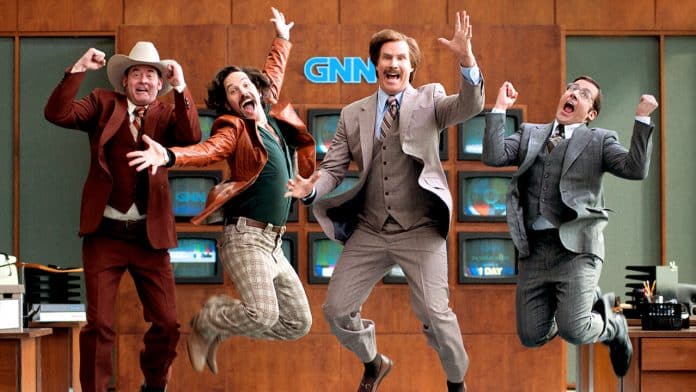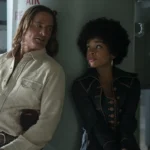Are Anchorman Movies Based on True Stories? – Adam McKay, an Oscar winner, made his directorial debut in 2004 with “Anchorman: The Legend of Ron Burgundy,” a satire of 1970s journalism culture. “Anchorman,” with an ensemble cast of comedic heavyweights, is widely regarded as one of the funniest comedies ever created. To be sure, the show’s characters, catchphrases, and segments are still imitated and parodied today.
The film follows San Diego anchorman Ron Burgundy (Will Ferrell) and his newscaster pals (Paul Rudd, Steve Carrell, and David Koechner) as they negotiate a changing industry. When Veronica Corningstone (Christina Applegate) joins the news station, she ends up co-anchoring Burgundy’s show, much to his dismay. Antics develop, but the two eventually succeed in working together, resulting in a sequel that was released in 2013.
While the comedy satirises 1970s culture, particularly the rise in popularity of television news, it also intentionally highlights issues that afflicted the journalism industry at the time, such as sexism and misogyny. Many people have pondered if the news anchor rivalry between Burgundy and Corningstone was based on a true story.
Must Read: Is Ron Burgundy a Real Person?
Are the Anchorman Movies Based on True Stories?
The first movie in the franchise, ‘Anchorman: The Legend of Ron Burgundy,’ (2004) is partially based on a true story. Burgundy and his friends are introduced, as well as how they react vehemently to the presence of female news anchor Veronica Corningstone. The rest of the story follows her and Burgundy’s fierce rivalry, which is peppered with amusing mishaps. As previously stated, the film is based on Jessica Savitch, a late-night news anchor, and her tumultuous relationship with her colleague Mort Crim.
In a December 2013 interview, the latter revealed that Burgundy’s character was based on him. “I’m not sure you ever see yourself in a parody, but it was entertaining.” Like any good satire, he took a simple concept and took it to its logical conclusion in order to derive hilarious value from it. It didn’t bother me in the least. “I’ve been mocked previously in other aspects of my public life,” he explained.
In a separate interview with USA Today, the former anchorman discussed the newsroom environment in the 1970s, revealing that it was hostile to new female staffers. “Was there some animosity over a 25-year-old, very inexperienced lady being brought in and thrown down at the anchor desk?” He asked, clarifying how closely the movie represents his and Savitch’s relationship.
I believe it was the fact that she had fewer qualifications simply because she looked good on camera that irritated us more than the fact that she was a woman. There is some truth in that, but I don’t believe it was sexism. Of course, that wouldn’t make for nearly as entertaining a film.”
As a result, we can claim that ‘Anchorman: The Legend of Ron Burgundy’ is a parody depiction of 1970s local news channels. It accurately borrows from the mannerisms and philosophies of those who worked there. ‘Anchorman 2: The Legend Continues,’ (2013) the sequel, moves the audience to a new decade and follows Ron Burgundy and his friends as they take over the 24-hour news landscape in 1980s New York. While the second film is not based on any true events, it does a good job of capturing the hot media trends of the 1980s.
It examines, for example, the forceful nationalistic posture taken by news anchors at the time, the growth of corporate-owned media channels, infotainment, and the boiling debates over race and sexuality in the news.
The genuine performances of the cast members help to bring the realistic narrative and topics of the films to life. It’s worth repeating that Ron Burgundy’s character, as well as the two films, are a combination of mostly fictional and a few mocked real-life elements, and should be enjoyed as such.















